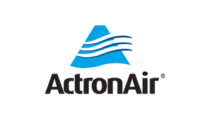
What are the Cheapest Air Conditioners to Run?
Air conditioners can be an absolute godsend during the hottest months of the year. They can be equally as essential during the cool winter months as well. But whether you want cool air in the summer or warm air in the winter, air conditioning comes at a cost.
On top of the purchase and installation price of your air conditioner, you’ll also need to factor in running costs as well. So, with such a great range of air conditioners available, which ones are among the cheapest to run?
There are many factors that can affect running costs; let’s take a look at some and try and determine an answer to this age-old question.
Five Factors That Influence Air Conditioner Running Costs
Whether you use a portable air conditioner, a reverse cycle split system, or have ducted air conditioning installed, there are numerous variables that can affect the running cost. They include:
- Energy efficiency – air conditioning units with more stars offer greater energy efficiency. This generally means cheaper running costs.
- Air conditioner type – a reverse cycle split system air conditioner is typically cheaper to run than a ducted system or portable air conditioner.
- The current temperature outdoors – if the outside temperature is significantly higher than your desired indoor setting, your air conditioner must work harder to counteract that warm air to reach that temperature. The harder it needs to work to deliver cool air, the less efficient it is and the more expensive it costs to run.
- The indoor temperature setting – the lower you set the desired temperature on the air conditioner thermostat, the harder your aircon has to work and the higher the running costs as a result. As consumer website Finder highlights, reducing the thermostat temperature setting by just one degree can increase operating costs by 10%.
- The room size and positioning of the indoor space – larger and north or west facing rooms with windows can take longer to cool. This therefore requires more energy consumption which bumps up running costs.
Additionally, the cost of electricity usage as set by your electricity provider will impact on average air conditioning running costs. To better understand how different air conditioning systems impact your energy bill, check out this expert guide on energy-efficient air conditioners.

The “Cheaper to Buy vs Cheaper to Run” Trade-off
As you shop around for a cheap air conditioner and discover the many different makes, models and styles available, you’ll soon discover that the price range is equally as varied as the great range of air conditioning units itself.
You can buy a seemingly great value portable air conditioner in the hundreds of dollars to cool a single room. Or you can spend thousands of dollars buying a fully ducted air conditioning system and having it installed throughout your home. What you’ll also likely come across is the relationship between purchase price and energy efficiency.
In a nutshell, it generally goes:
- Cheap air conditioners are typically less efficient and therefore more expensive to run.
- The more expensive the air conditioner, the more energy efficient it is and the cheaper the running costs.
There may end up being the occasional exception to this general rule, and the five factors discussed earlier will certainly affect energy efficiency. But the purchase cost vs running cost trade-off will be something you need to consider.
Split System vs Ducted AC vs Portable AC: A Comparison
So, when it comes to portable air conditioners, reverse cycle split systems and ducted air conditioners, which is cheaper to run for homeowners in Australia?
It’s important to reiterate that average running costs will be affected by the climate conditions of your area, the rate you’re charged for electricity usage by your retailer, the size of the room and the cooling capacity of your system.
- The greatest benefit that portable air conditioners offer is their convenience. Though a portable air conditioner is relatively inexpensive to purchase and seemingly offers great value on the surface, they’re not particularly energy efficient. The money you save at the point of purchase will likely end up going towards air conditioner running costs.
- A split system allows you to set the temperature in a single room. It is a little pricier than a portable air conditioning unit, but does offer greater energy efficiency, so you’ll save money when the power bills arrive. If you have multiple split systems installed throughout your home, you can set different temperatures in different rooms, or choose which rooms to heat or cool at any given time.
- With ducted air conditioning, you’re limited to the one centrally set temperature in each ducted room. However, if your ducted system has zoning functionality, you can choose which rooms get heated or cooled. Without that zoning capability, you’ll find yourself wasting energy and money heating or cooling unused rooms in the house.
An early 2022 survey by Canstar shows the vast differences in running costs between different states across Australia. For example, a small 20m² room in Brisbane (where temperatures are typically hot) might cost up to $103.94 using a 2-3kW air conditioner.
A room in Melbourne of the same size being cooled by an air conditioner with the same capacity might only cost just a touch over $23 as temperatures are typically cooler anyway.
Similarly, ducted air conditioner costs will also vary between cities. In Brisbane, average yearly costs came in at $817.01 for cooling and heating at $62.06. In Melbourne, costs ranged from $176.36 for cooling to $1118.46 for heating (using a 12-15kW capacity system in a 90m² space.
Both ducted and split system air conditioners require professional installation, with ducted systems being more difficult as it requires complete installation of ducts and vents in your ceiling. Reverse cycle split systems typically cost somewhere between $1000 and $2000 while ducted systems can be priced anywhere between $5000 and $25,000 including installation.

To Summarise …
Cooling or heating your home certainly helps to improve climate comfort, but it does come at a price. Whether you have a portable air conditioner, a reverse cycle split system or ducted air conditioning, running costs can fluctuate due to numerous different variables.
Those factors range from the climate conditions of your region to the cooling capacity of your air conditioner to the room size among many others. The general consensus, however, appears that the reverse cycle split system is among the cheapest air conditioners to run. They offer great value while still being relatively inexpensive to purchase.
For more information, contact the heating and cooling experts at Metropolitan Air Conditioning. We’re available 24/7, every day of the year.
Please note: This information is provided for advice purposes only. Regulations differ from state to state, so please consult your local authorities or an industry professional before proceeding with any work. See our Terms & Conditions here.
Published: 2023-01-18

































